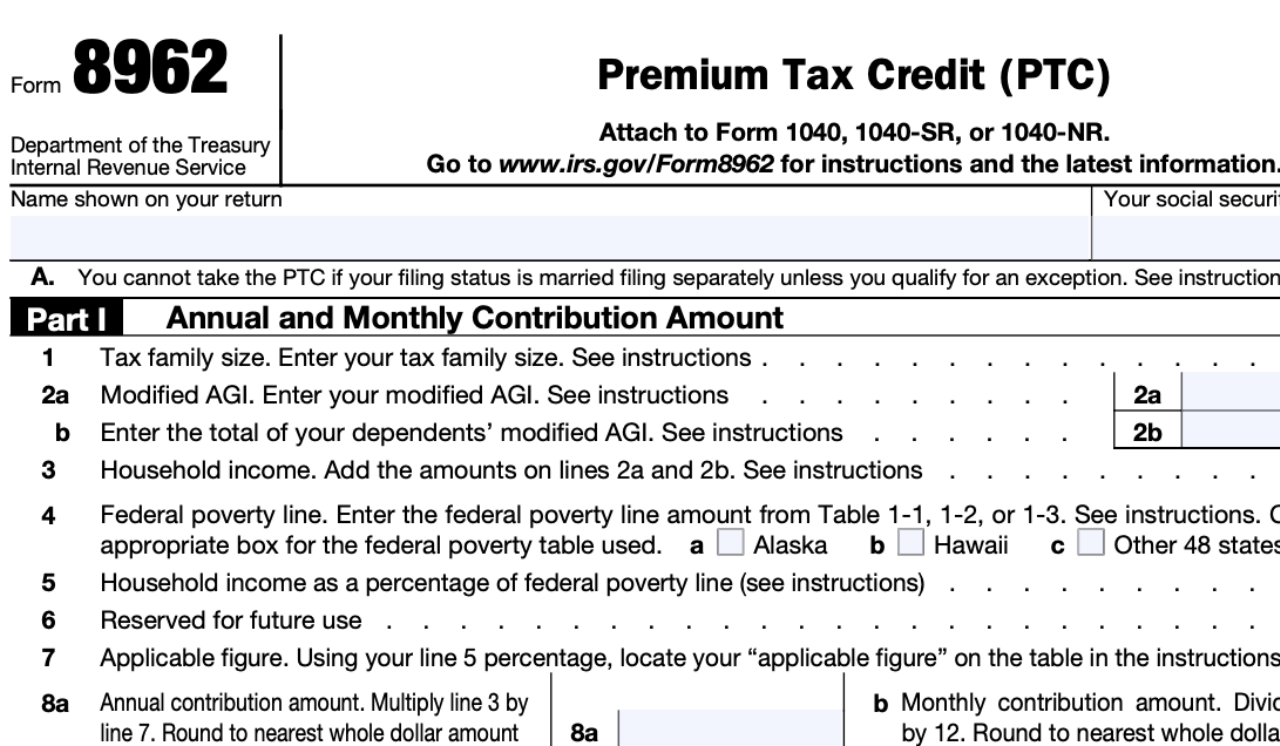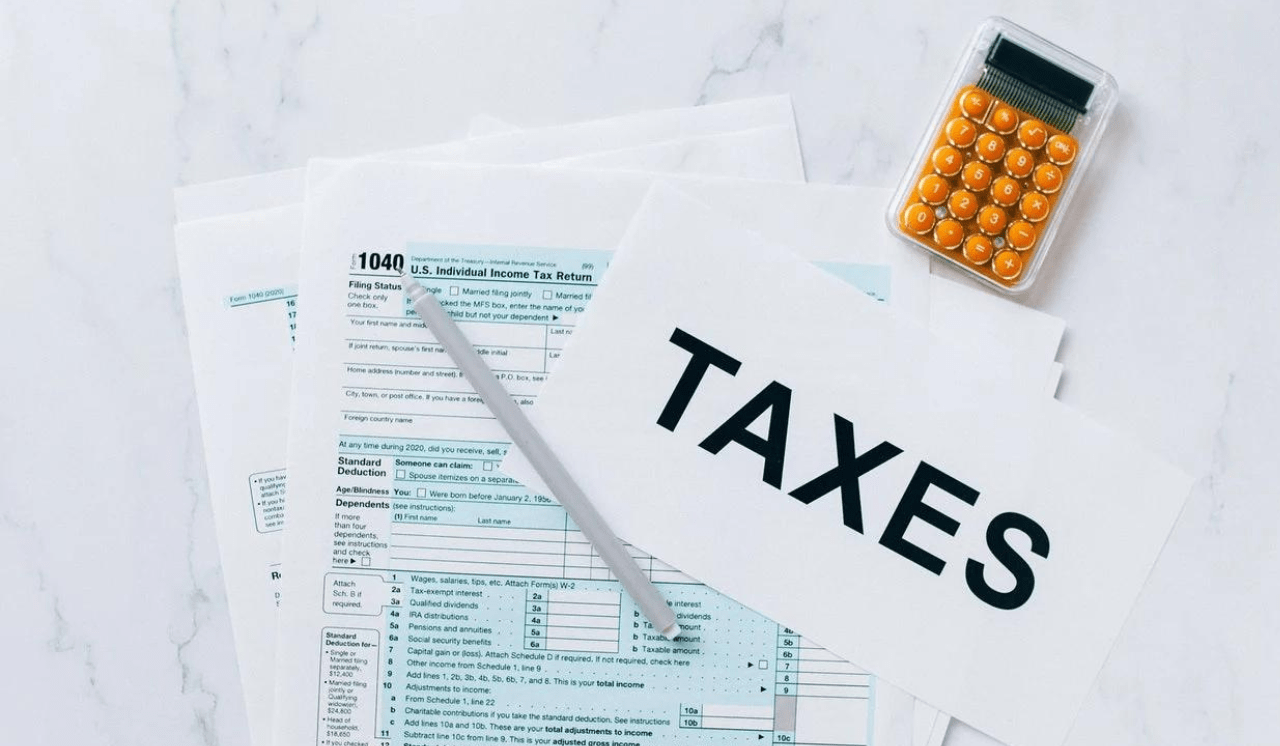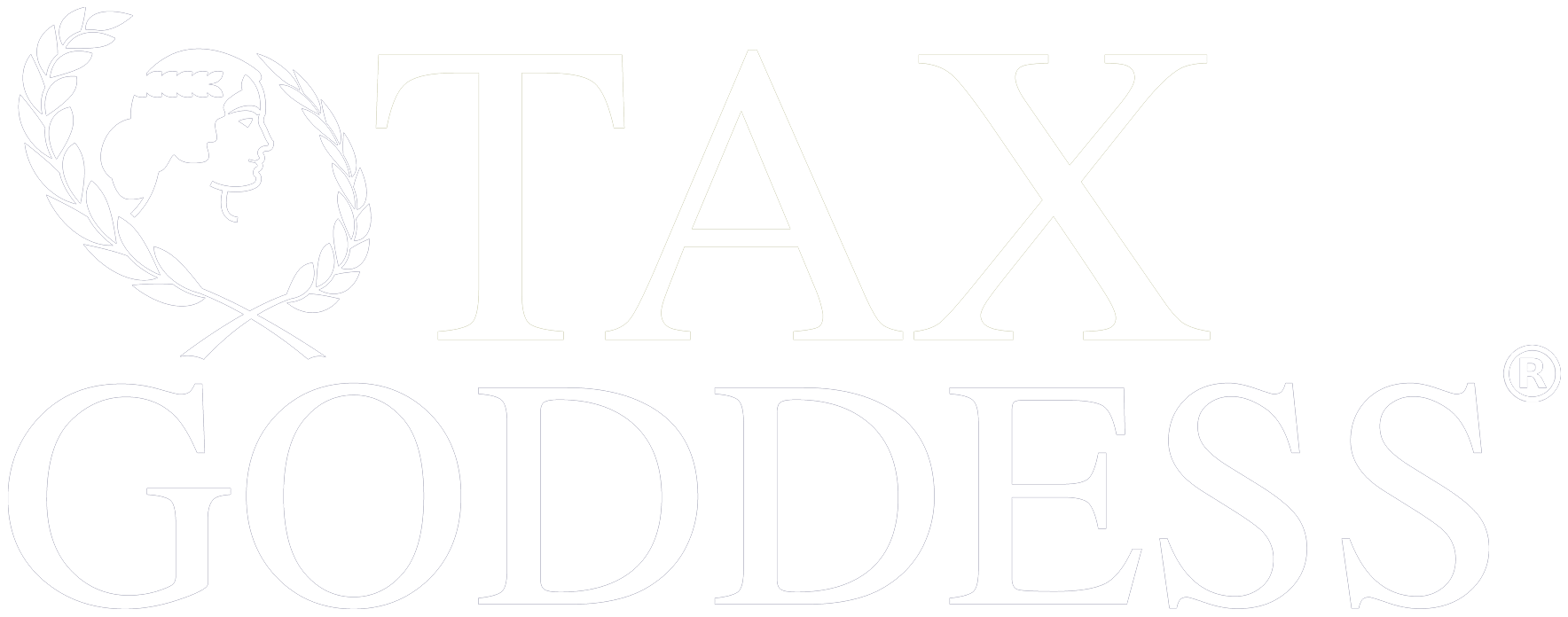Your tax situation might seem a little gloomy this year, but there are a lot of bright sides to look up to if you know where to search. The Affordable care act is one of those bright sides you can take advantage of in 2023, especially with your tax Form 8962. The affordable care act provides families with refundable and advanceable tax credits to purchase health insurance through exchanges in state and federal marketplaces.
If your estimated income falls between 100% and 400% of the federal poverty level for a household and you purchase health insurance through the National Health Insurance Marketplace, you could be eligible for the premium tax credit (PTC). The premium tax credit is a refundable tax credit that helps you cover the premium of your health insurance purchased through the health insurance, thereby reducing your monthly payment.
What Is Form 8962?
Form 8962 is used to calculate the amount of premium tax credit you qualify to claim if you purchased premium health insurance through the Health Insurance Marketplace. Form 8962 tells you how much credit you are qualified to receive and whether you owe the taxes for receiving too much in advance premium tax credit. The purpose of the form is to allow taxpayers to calculate their PTC amount with their federal income tax return. With this, you can reconcile that amount with your advance payment on the Advance premium tax credit.
While Form 8962 and PTC are great opportunities to reduce your tax money, it’s also not for everyone. Only those who get health insurance through the Affordable Care Act Health Insurance Marketplace (also called Exchange) are qualified to use Form 8963. Also, not everyone who has marketplace coverage can qualify, but you may qualify if you used healthcare.gov or your state’s healthcare insurance exchange for coverage.
In addition, you can’t use Form 8962 if you get health insurance from another insurer and receive a 1095-B form documenting your health insurance coverage. You also don’t qualify to use Form 8962 if you get coverage through your employer and get a 1095-C Form, but if you have marketplace coverage and received a 1095-A form to document the coverage, then you may be a candidate for the premium tax coverage.
How To Get Form 8962
Form 8962 is available and free to download on the IRS website. If you’re filing your taxes with electronic tax filing software with electronic software, this form will be generated for you as you go through the questionnaire format.
What Happens If I Don’t File Form 8962
For every tax year, you receive an advanced premium tax credit. You must file a federal income tax return that includes Form 8962. You must take this action to avoid being disqualified from applying for premium tax credits for the following year. Excluding your Form from your tax return is also considered a failure to reconcile, and you may be disqualified from applying for premium tax credits at the next Open Enrollment.
If this happens to you, the best thing is to remedy the failure as soon as you can. Although you can still sign up for health insurance coverage in the coming year, you won’t be eligible for the advance premium tax payment until you have filed your tax returns with Form 8962 for the prior year.
Form 8962 Instructions
If you’ve been wondering how to get your form filled the right way, here are a few steps to help you:
- Get the IRS Form 8962 from the IRS website.
- Open with PDF and start filling out the form.
- At the top of the form, enter your name and social security number.
- Take Part I first. Line 1 should indicate the number of Form 1040 or Form 1040A exemptions. Lines 2a and 2b should be filled with the adjusted AGI amounts. Add the amounts on lines 2a and 2b to get household income, then enter it on line 3. Choose the proper option and type the value on line 4. On line 5, enter the household income as a percentage of the federal poverty line. If you input 401% on line 5, go straight to line 7. If not, choose yes on line 6. Locate the pertinent number and enter it on line 7. By using the technique outlined, enter the annual contribution amount on line 8 of the form.
- Fill out Part II, which is the ‘Premium Tax Credit Claim and Reconciliation of Advance Payment of Premium Tax Credit,’ is the document’s title. Lines 9 and 10 should be completed correctly before moving to line 11. You must enter the annual totals in the blank fields under each column in the tiny table on line 11. Below line 11, there is another table where the monthly amounts for each column must be filled in. Lines 12 to 23 of amounts should be entered. Line 24 of the chart should be used to input the total premium tax credit. Enter the Advance payment of PTC on line 25 using the instructions provided. On line 26, type Net premium tax credit.
- Type in the figures from Part III for Repayment of Excess Advance Payment of the Premium Tax Credit in the title of the document. Enter Excess advance payment of PTC on line 27. On line 28, type Repayment limitation. Type Excess advance premium tax credit repayment in line 28.
- Begin completing Part IV, which is the Allocation of Shared Policy is the name of Part IV. From lines 30 to 33, you must list all of the shared policy allocations contained in a table. There are numerous additional fields in these tables that must be filled in. The Policy Number must first be entered in field a. Fill out field b with the SSN of another taxpayer. You must provide the Allocation start month in field c. You must specify the Allocation stop month in field d. Fill out field e with the Premium Percentage. Enter the SLCSP Percentage in field f. Finally, enter the Advance Payment of the PTC Percentage for line g. You must similarly complete the other shared policies. Choose the
- Head to Part V which is Alternative Calculation for Year of Marriage. Fill out fields a, b, c, and d on line 35 with your SSN’s alternative entries. Enter all alternative entries for your spouse’s SSN in fields a, b, c, and d on line 36. This is a simple method for filling out IRS Form 8962.
If My Tax Return Was Rejected, Can I Start Over?
If the IRS rejects your federal income tax return, don’t panic. If your return is rejected, it should correct any errors and resubmit your return as early as possible. The IRS can automatically make corrections for math errors, but you may receive a notice in your mail for other mistakes.
One thing you can do to save yourself from starting over is to double-check and ensure you didn’t make some common mistakes because a rejected tax return can delay your tax refund. It could also be the potential reason you might have to pay late filing penalties if you don’t meet the tax deadline.
Conclusion
There are a lot of tax opportunities you should never miss, and filing your form is one of them because it helps you reduce your tax burden. Apart from your premium tax credit and form 8962, there are also countless ways to cut down your tax bill. All you need is the right tax team, like the Tax Goddess team, to help you discover your missing tax opportunity and use it to your advantage. Book a free call today to discover your missing tax opportunities.









